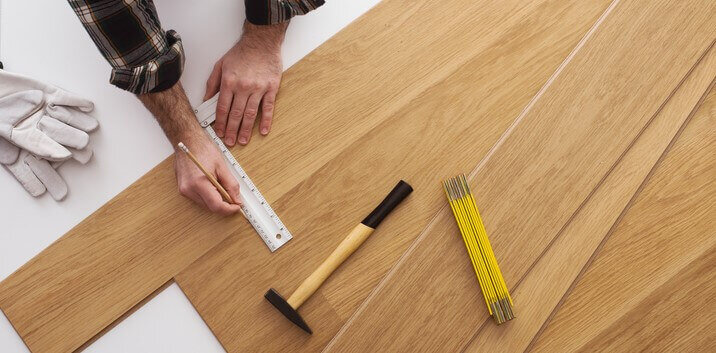No other flooring compares to the natural beauty, comfort, and warmth that wooden flooring offers. Solid hardwood floors are worth the investment. However, with huge options and technicalities behind each type, choosing the right flooring for your home or commercial property can seem a little daunting.
So, if you are stuck for which timber floor to choose, join us as we walk you through the different aspects and features to consider when choosing the right hardwood flooring for your property.
1. Type of Flooring: Solid Hardwood Flooring or Engineered Hardwood Flooring?
The first and foremost step is to choose between the two main flooring types – solid timber and engineered timber flooring. The best way to choose is to consider your aesthetic needs, affordability, lifestyle, foot traffic and climatic conditions.
Solid Timber Flooring
Solid hardwood comes in a single solid piece of real wood. They are a lifetime investment. The main advantage is you can sand and polish them as many times as you want. So essentially, they have a longer life, timeless beauty, and provide higher value to your property.
Engineered Timber Flooring
Engineered wood floorings are typically multiple layers of plywood with high-quality hardwood as a top layer. It comes with a protective finish, making it more affordable and timesaving. However, you don’t get the same exquisite look as natural hardwood flooring and it won’t have as big an impact on the resale value of your home as buyers often seek out properties with real timber flooring.
2. Species and Grade
Choosing the most appropriate species of wood decides the final look of your home or commercial property. Most importantly, it equates to the type of performance and durability of your flooring. For example, if you have pets, your ideal flooring must resist frequent scratches and dents. Some of the popular Australian hardwood species are Blackbutt, Cypress pine, Jarrah and Spotted gum.
Nevertheless, solid timber offer tons of species and grades, leaving you spoilt for choice. Together with species, you must also select the grade. From the natural discolouration to gum veins and insect trails, it decides the beautiful aesthetics of your flooring.
3. Plank Size
Not many give attention to plank size when choosing hardwood flooring. But considering the plank size, such as its thickness and width, has many advantages. A thicker floorboard provides structural integrity, whereas a wider floorboard brings to light the natural patterns and textures of the flooring. Wider floorboards are ideal for smaller rooms which makes them look more spacious and larger. So, make sure to check its thickness and width as per your needs.
4. Finish, Stain & Polish
Once you’ve chosen the type of hardwood flooring you would like in your home, you can then customise it with the perfect finish, stain, and polish. There are four types of flooring finishes: Solvent-based Polyurethane, Water-Based Polyurethane, Stain, and Modified Oils. Read more here to learn about the timber floor finishes available through Abacus Flooring. These flooring finishes will provide a protective coating for your hardwoods and the choice you make will determine the durability and longevity of your floors.
You can customise the look and feel of your timber floors with different polishes. Everything from a high gloss finish, Semi-Gloss, Matte and Lime Wash is available to select from Abacus Flooring in Sydney. You can pick the colour of your stain for your timber floors to really get the style and design you’ve been searching for in your home or business.
Regardless of the type of flooring you choose, wooden floor sanding and polishing can always make your flooring look flawless and new. So, contact us at Abacus Flooring for floor sanding and polishing services in and around Sydney, Hills District, North Shore, Northern Beaches, Inner West, and the Eastern Suburbs.


